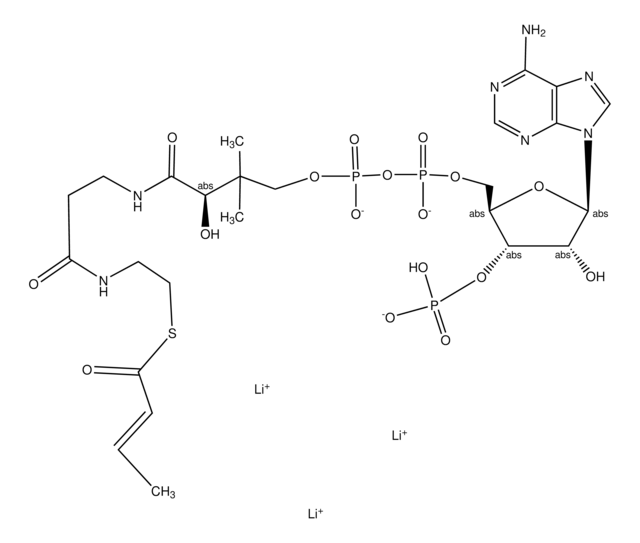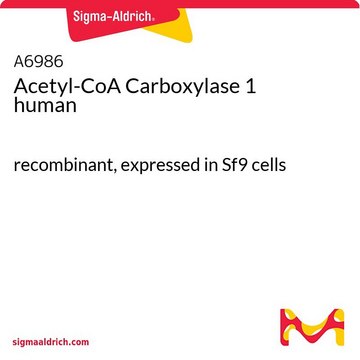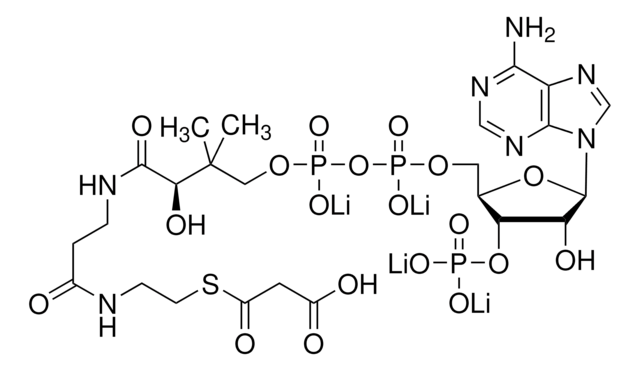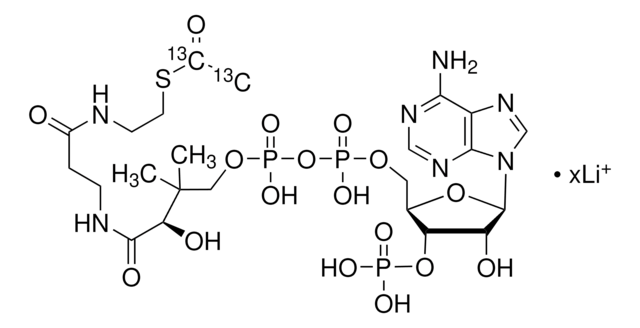ACOA-RO
Roche
Acetyl-Coenzyme A
85% (Enzymatic and Absorbance), 2% (lithium)
Synonym(s):
Acetyl-Coenzyme A, acetyl-coa
About This Item
Recommended Products
description
Chemical Formula: C23H35N7O17P3SLi3
Quality Level
Assay
85% (Enzymatic and Absorbance)
form
solid
mol wt
Mr 809.6 (acetyl-CoA)
Mr 827.4 (acetyl-CoA-Li3)
packaging
pkg of 010 mg (10101893001)
pkg of 200 mg (11585371001)
pkg of 050 mg (10101907001)
manufacturer/tradename
Roche
concentration
2% (lithium)
storage temp.
2-8°C
General description
Application
Biochem/physiol Actions
Preparation Note
Storage conditions (working solution): -15 to -25 °C
50 mg/ml in phosphate buffer, pH 7, is stable for 3 weeks at -15 to -25 °C. Unfrozen solutions should be immediately used.
Other Notes
Storage Class Code
11 - Combustible Solids
WGK
WGK 1
Flash Point(F)
Not applicable
Flash Point(C)
Not applicable
Certificates of Analysis (COA)
Search for Certificates of Analysis (COA) by entering the products Lot/Batch Number. Lot and Batch Numbers can be found on a product’s label following the words ‘Lot’ or ‘Batch’.
Already Own This Product?
Find documentation for the products that you have recently purchased in the Document Library.
Customers Also Viewed
Our team of scientists has experience in all areas of research including Life Science, Material Science, Chemical Synthesis, Chromatography, Analytical and many others.
Contact Technical Service














